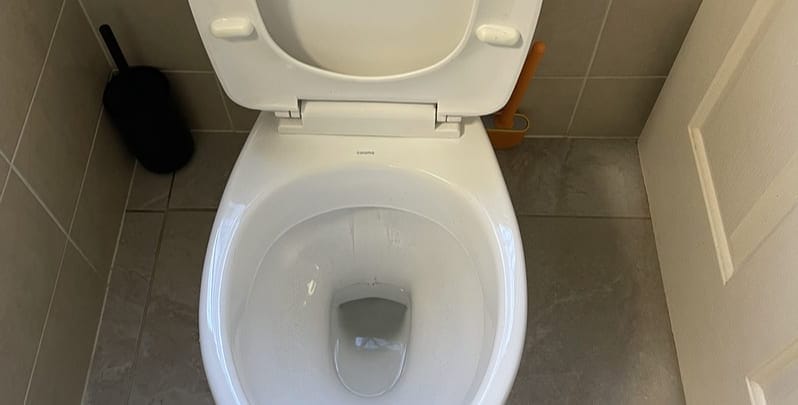How to Unclog a Toilet

A clogged toilet is a common issue that every household encounters.
Whether it’s due to too much toilet paper or other debris, a blocked toilet can disrupt your daily routine. Understanding how to unclog a toilet can save you time and money. From using a flange plunger to a homemade drain cleaner, we will cover a range of techniques. These methods are designed to be simple yet effective, ensuring your toilet bowl is back in working order in no time.
Want some effective strategies on how to unclog a toilet? In this guide, we will explore various DIY methods for unclogging toilets, helping you tackle everything from minor clogs to stubborn blockages without always needing a professional plumber.
Understanding the Problem: Why Toilets Get Clogged
Toilet clogs are a common household problem that can arise from various causes. Here are some of the common causes of clogged toilets:
- Excessive use of toilet paper: Using too much toilet paper at once can create stubborn blockages in the toilet drain, causing slow draining and ineffective toilet flushes.
- Flushing non-flushable items: Items like paper towels and hygiene products are not designed to be flushed and can cause significant clogs.
- Build-up of organic material and soap scum: Over time, organic material and soap scum can harden, narrowing the pipe’s edges and leading to a blocked toilet.
- Issues within the toilet cistern: Problems in the toilet cistern can affect the water supply and flush efficiency, contributing to clogs.
- Accidentally flushed foreign objects: Toys, plastic bottles, and other foreign objects can get flushed accidentally and may require professional tools like a plumber’s snake or toilet auger to remove the obstruction.
Understanding these causes can help to effectively address and prevent a badly clogged toilet in your home.
Safety First: Preparing to Unclog Your Toilet
Before tackling a toilet clog, it’s important to prioritise safety and hygiene. Start by putting on rubber gloves to protect your hands from toilet water and bacteria. Keep a bucket and mop nearby to clean up any spills. Ventilate the bathroom by opening windows or turning on the exhaust fan.
Next, gather the necessary tools. A plunger is often the first go-to. But if you’re dealing with a more stubborn toilet blockage, have alternative methods ready to use like a wire coat hanger or a DIY drain snake. If you’re dealing with an even more severely blocked toilet, a licensed plumber may be necessary.
Ensure you have dish detergent, a large plastic bottle, and a toilet snake if you need alternative methods. By preparing with the right tools and safety measures, you can handle toilet clogs efficiently and minimise the risk of mess or injury.
Using a Plunger
A plunger is a staple tool for unclogging toilet drains. To start, put the toilet seat up and make sure the area around the toilet is clear. Place the plunger over the toilet drain, ensuring you have a tight seal. This guarantees effective suction when you begin plunging.
Use a firm, consistent motion to push and pull the plunger. You may need to do this several times to dislodge the clogged area. For better results, use warm water to help break down the blockage.
If the clog persists, try alternative methods such as a plumbing snake or drain auger. These tools can reach deeper into the toilet cistern and plumbing system. Remember to wear rubber gloves and clean the area thoroughly with a toilet brush after clearing the clog to ensure hygiene.

Dish Soap and Hot Water
Dish soap and hot water can be an effective, simple solution for unclogging a toilet without a plunger. Start by squirting a generous amount of dish soap into the toilet bowl. The soap helps to break down the clog by lubricating the pipe’s edges and loosening the blockage.
Next, heat water to just below boiling. From waist height, carefully pour the almost-boiling water into the toilet bowl, making sure you don’t splash yourself. The combination of hot water and dish soap will help to dissolve and dislodge the clog. Let the solution sit for a few minutes to allow the chemical reaction to work.
If the toilet is still clogged, try repeating the process or using a wire hanger to break up the blockage. For more stubborn clogs, you may need a plumbing snake or drain auger to reach deeper into the toilet drains. This method is a safe and easy alternative to using harsh chemicals, and it often works well for minor clogs.
The Coat Hanger Method
When facing a stubborn toilet clog, the humble wire coat hanger can be a handy tool. Start by straightening the coat hanger, leaving the curved hook at the end. This hook will help you reach and break up the clog deep within the toilet drain.
Carefully insert the coat hanger into the toilet bowl, guiding it through the drain. Gently push and twist the hanger to break up the blockage. Be cautious not to scratch the porcelain. This method is particularly useful when the clog is too solid for a plunger to handle effectively.
If the clog persists, consider using additional methods. You can pour a mixture of one cup of very hot water and a quarter cup of dish soap to help loosen the debris. For more severe clogs, a drain snake might be necessary. This method can also be effective for clearing blockages in the bathroom sink, providing a versatile solution for multiple plumbing issues.
Baking Soda and Vinegar
For an eco-friendly solution to unclogging your toilet, try using baking soda and vinegar. This method leverages a natural chemical reaction to break down blockages without harsh chemicals. Follow these simple instructions:
- Start by pouring half a cup of baking soda into the toilet bowl, ensuring it reaches the clogged area.
- Add two cups of vinegar to the bowl. The mixture will fizz and bubble, helping to dislodge the clog.
- Let the solution sit for about 30 minutes.
- If the toilet flush is still slow, you can repeat the process for better results. This DIY Drano bomb is safe and environmentally friendly.
For more stubborn clogs, consider adding eight to ten tablespoons of Epsom salt to the mix. If this doesn’t work, a drain snake or vacuum hose might be needed to clear the blockage. This eco-friendly method is effective and avoids the need for harmful chemicals in your plumbing system.

When to Call a Professional
If you’ve tried multiple methods like using drain snakes, dish soap, and hot water but the toilet remains clogged, it may be time to call a professional plumber. Persistent clogs can indicate deeper issues within your plumbing system that require specialised tools and expertise to resolve.
Additionally, if you notice water backing up in other drains, such as the bathroom sink or shower, this could signal a more serious blockage in your main sewer line. Professional plumbers have the equipment and knowledge to diagnose and fix these complex problems, ensuring your plumbing system functions smoothly.
Please note: Thanks for reading our blog article “How To Unclog A Toilet”. This information is provided for advice purposes only. Regulations differ from state to state, so please consult your local authorities or an industry professional before proceeding with any work. See After Hours Plumbing’s Terms & Conditions here.
